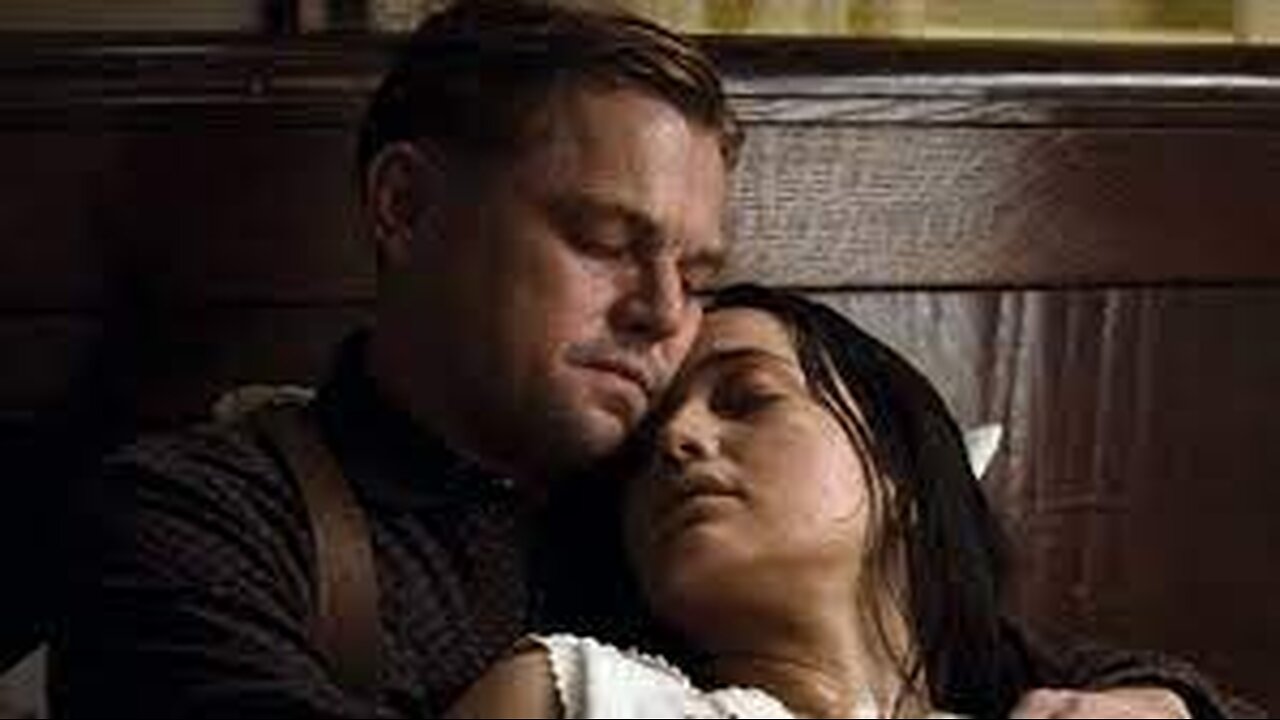Premium Only Content

How Scorsese Moves the Camera With Purpose in ‘Killers of the Flower Moon’ | Anatomy of a Scene
To tell the sweeping story of the Osage murders of the 1920s in “Killers of the Flower Moon” (nominated for 10 Oscars, including best picture), the director Martin Scorsese opted mostly not to sweep the camera along with the narrative.
“Dealing with the landscape and the period, I tended to have more stable images,” he said during a video interview, “images that were almost like old photographs in a way.”
But one key moment called for a change. As investigators go to Oklahoma to look into the Osage murders and disappearances, they drill down to a group of individuals they think are involved. And in this scene, the lawmen converge to arrest one person they believe they can get information from, Ernest Burkhart, played by Leonardo DiCaprio.
As Ernest sits in a pool hall/barbershop, investigators descend on the space to surround him.
“Since the characters are all circling around each other in the movie, and since the circle gets tighter and tighter, my drawing for the shot was simply a circle with an arrow. That was it,” Scorsese said.
What follows is what the director called “a circular ballet,” with the camera continually moving around Ernest as he turns repeatedly, along with investigators moving in on him from different directions.
“That was one of the most enjoyable moments, laying out that shot,” he said.
The film then cuts to an interrogation room, with Ernest on one side of the frame, investigators on the other. This returns the movie back to more stable images, but with depth. The wide shot looks almost as if it’s playing out on a stage, the players shown full body and arranged in a kind of uneasy tableau.
“Once scenes and stories like this end up in police stations or interrogation rooms, I find the images become flat and uninteresting,” Scorsese said. “And so I said, let’s be dealing with angles that are boring into the characters. Not boring images, but boring, like really focused on them.”
Scorsese made the shots more head on, but also employs a passing-of-time technique that he said was inspired by the 1947 Michael Powell and Emeric Pressburger drama “Black Narcissus.” At one moment during the interrogation, the scene cuts to Ernest in a medium shot and fades to black. Then it fades right back in on him standing in the same place.
”We may have faded away for an hour to two hours,” Scorsese said. “You don’t expect to come fading back in on the same image,” he said.
In telling this story, the filmmaker concluded, “what I had to do was fight a tendency to over-design camera interpretation. In so doing, a tension is held in the frame.”
Whether it's reporting on conflicts abroad and political divisions at home, or covering the latest style trends and scientific developments, NYTimes video journalists provide a revealing and unforgettable view of the world. It's all the news that's fit to watch.
-
 LIVE
LIVE
LFA TV
14 hours agoLIVE & BREAKING NEWS! | TUESDAY 12/02/25
4,105 watching -
 LIVE
LIVE
Benny Johnson
1 hour agoTrump Launches MASSIVE CRIMINAL Investigation Into Somali Fraud, Tim Walz PANIC: They Stole Billions
4,668 watching -
 LIVE
LIVE
Nikko Ortiz
1 hour agoThe Coldest Place On Earth... | Rumble LIVE
187 watching -
 LIVE
LIVE
Badlands Media
10 hours agoBadlands Daily – December 2, 2025
4,055 watching -
 LIVE
LIVE
Viss
1 hour ago🔴LIVE - The Arc Raider Duo That Changed Everything - Viss w/ Hambino
206 watching -
![[MnK] Let's Dominate Solo Lobbies](https://1a-1791.com/video/fwe2/07/s8/1/Y/4/Q/E/Y4QEz.0kob-small-MnK-Lets-Dominate-Solo-Lobb.jpg) LIVE
LIVE
GloryJean
1 hour ago[MnK] Let's Dominate Solo Lobbies
180 watching -
 LIVE
LIVE
Wendy Bell Radio
6 hours agoWe Don't Want Them
7,214 watching -
 LIVE
LIVE
The Big Mig™
41 minutes agoThere Is Hope for Colorado w/ Candidate Hope Scheppelman
2,387 watching -
 LIVE
LIVE
The State of Freedom
1 day agoHe Served His Country – Now He’s Suing the State | Citizen Spotlight feat. Bert Callais | Ep. 354
45 watching -
 1:36:07
1:36:07
Graham Allen
3 hours agoThe Media “Outrage” Against The DOW, FBI, and The White House Is COORDINATED!!
99.7K520